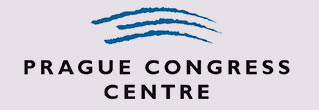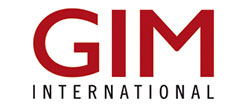Tutorials
ISPRS organizes half or one-day tutorials before the Congress (11th and 12th July 2015). These tutorials are prepared for Congress participants to bring their knowledge up to date or to be introduced to new developments. A tutorial will be given only if a sufficient number of participants have registered before 15 May 2016.
Tutorials are open for all congress participants. Register for tutorials using the Congress paper management system (Conftool). Price for half-day tutorials is 45 € and for full-day tutorials it it 99 € (lunch included).
Tutorial 1: BIGEARTH – Flexible Description and Adaptive Processing of Massive Earth Observation Data on High Performance Computation Architectures
Keywords: adaptive processing, satellite image processing, cloud computing.
Target group: The participants are EO specialists interested on processing and analyzing massive spatial data. They imperatively need and expect to use HPC resources on distributed massive data, without carrying about technical details on management of computing infrastructure, and data management. Just on their low performance computer (e.g. laptop), they describe in a flexible and easy manner the processing and then execute remotely massive EO data on adaptive HPC resources. The complex processing is built upby basic operators already available. A few practical use cases willbe developed and experimented by the participants through the cloud infrastructures.
Tutorial 2: Synthetic Aperture Radar: How it works and modern applications
Keywords: SAR, applications, geotechnics, civil engineering, landslides, subsidence
Target group: Graduate and PhD students, young scientists, remote sensing specialists, geoscience professionals, preferably with some signal processing, engineering, programming,remote sensing or photogrammetry knowledge.
Tutorial 3: Airborne SAR (Half-day)
Keywords: NASA's airborne SAR sensors, Airborne SAR imaging, differences and parallels with spaceborneSAR
Target Group: Graduate and PhD students, young scientists, remote sensing specialists, geoscience professionals, preferably with some signal processing, engineering, programming,remote sensing or photogrammetry knowledge.
Tutorial 4: Bringing GEOSS services into practice
Keywords: Configuration, deploymentof open source software, spatial data infrastructure (SDI), publishing and sharing data and metadata using OGC and ISO standards, registration of services into the Global Earth Observation System of Systems (GEOSS)
Target Group: Novice GIS users with some computer basics
Tutorial 5: LiDAR processing introduction, hands-on session, quality checking, liar preparation, manual editing (Half-day)
Keywords: LiDAR processing introduction, hands-on session, quality checking, liar preparation, manual editing
Target Group: A course at the beginner to intermediate level for processing airborne or mobile LiDAR (or - to a certain degree - also dense-matched photogrammetry points).
Tutorial 6: Practical Remote Sensing: Handling Optical Data (Half-day)
Keywords: Sentinel Application Platform (SNAP) toolboxes, Quantum GIS (QGIS), hands-on session, basic image processing, spectral and thermal signatures, Landsat, MODIS
Target Group: The tutorial is aimed at those wanting to make use of open source tools (including the ESA Sentinel Toolboxes and Quantum GIS) to aid in the processing and display of optical satellite imagery. The material will include an introduction to image processing and GIS techniques alongside spectral signatures, vegetation indices and image classification.
Tutorial 7: Acquisition and Automatic Characterization of Scenes - From Point Clouds to Features and Objects
Keywords: Laserscanning, Range Imaging, Geometry Acquisition, Point Clouds, Reflectance Acquisition, Feature Extraction, Classification, Interpretation, Contextual Information
Target Group: Beginner to intermediate. All students, researchers and practitioners interested in active optical sensing, point cloud acquisition and state-of-the-art analysis.
Tutorial 8: Spatial random models for remotely sensed image analysis
Keywords: MRF, CRF, DRF, Spatial point processes, Relations between MRFs and SPPs
Target Group: The tutorial introduce statistical approaches for basic problems of image analysis, such as image segmentation, object extraction etc. So, researchers in these fields may find this tutorial interesting.
Tutorial 9: Usability methods and eye movement analysis for understanding the use of remotely sensed imagery, 3D geovisualizations and virtual reality
Keywords: image interpretation, usability, 3D, virtual reality, eye tracking, human factors
Target Group: Graduate students and scientists writing papers about use and usefulness of imagery and 3Dvisualizations/VR, anyone who is interested in human factors in visualization, practitioners who would like to learn how to conduct usability studies with their products.
Tutorial 10: Uncertainty Modelling and Quality Control for Spatial Data
Keywords: Uncertainty modelling, quality control, spatial data, spatial big data, GIS
Target Group: Students, researchers and practitioners who are in the field of GIS and remote sensing and are interested in uncertainty modelling and quality control in GIS, remote sensing and VGI.

























